K-Ships vs. U-Boats
Historian Thomas Paone explores the important role played by K-ships in hunting German U-Boats during World War II.
:focal(515x271:516x272)/https://tf-cmsv2-smithsonianmag-media.s3.amazonaws.com/blogging/featured/UB_9.jpg)
In January 1942, the war that had been raging in Europe arrived in the waters along the east coast of the United States. Although the United States had already experienced World War II in the Pacific with the attack on Pearl Harbor and other U.S. territories in December 1941, the start of the war in the Atlantic caught many military leaders by surprise. In mid-January, the German navy officially launched Operation Paukenschlag, a campaign of five submarines (often referred to as U-boats) to sink merchant ships carrying vital war supplies to Allied armies in Great Britain, Russia, and North Africa. In only a few short weeks, German U-boats sunk over 20 merchant vessels carrying thousands of tons of war material. The U-boats returned to their ports only after they expended all their torpedoes. To counter this new threat to maritime security, the U.S. Navy unleashed a new weapon to provide anti-submarine warfare: the K-Type blimp.
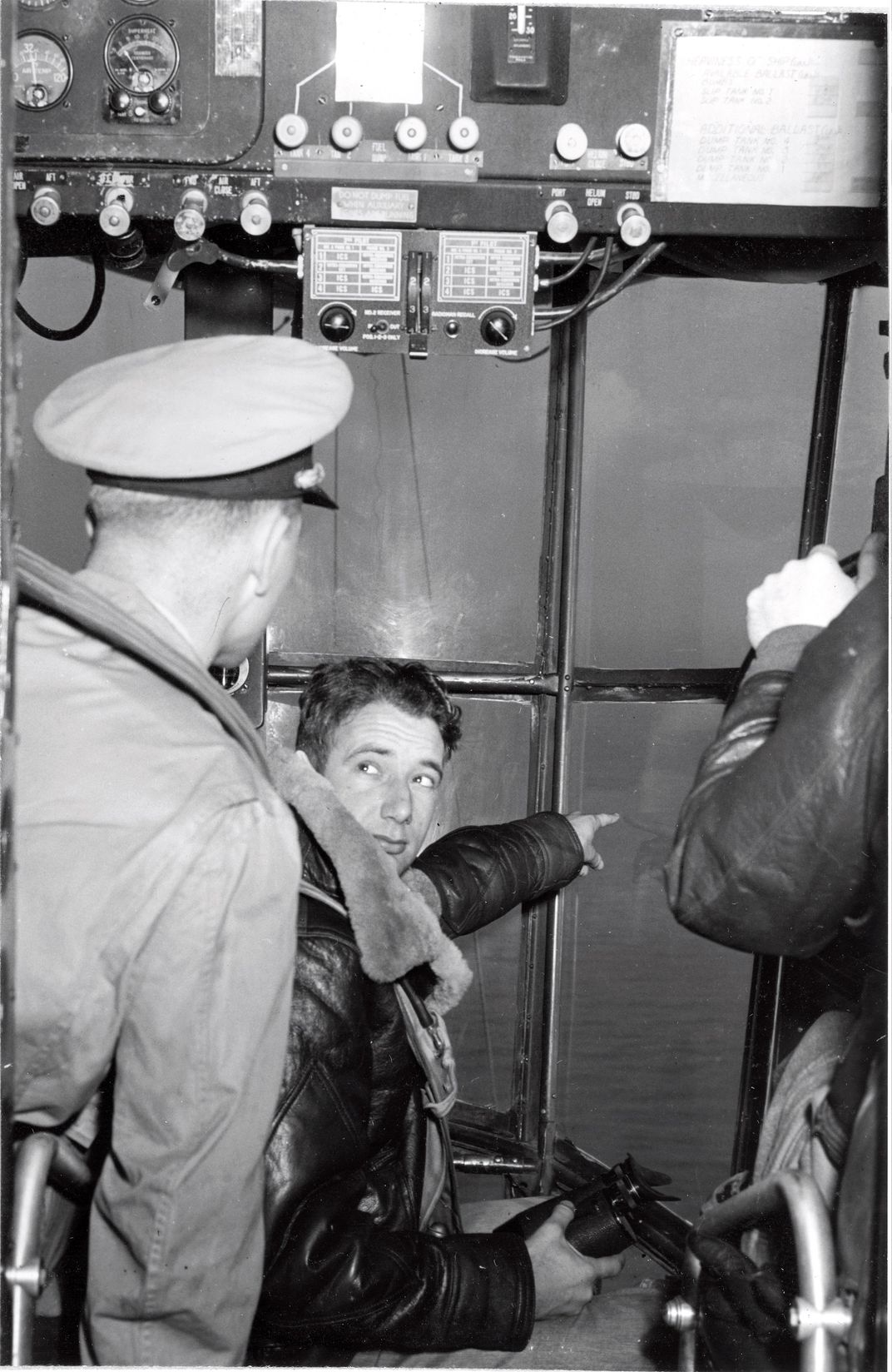
When the United States entered World War II, it only had six lighter-than-air vehicles available for use to hunt U-boats. The four completed K-Type blimps, or K-ships, in the Navy’s arsenal were in the air almost immediately after the U-boat attacks started in January 1942. The K-ship K-3 was sent to patrol the waters off Long Island, New York shortly after a U.S. tanker was sunk in that area on the night of January 14. K-3 patrolled the region, looking for oil slicks and other signs of a possible submarine. As the crew of the K-3 searched the seas, they learned from a nearby airplane that survivors had been found from the sunken tanker. Once at the location, K-3 lowered water and food to the survivors and flew in the area until surface ships could arrive. K-ships continued to serve as search-and-rescue craft during their long patrols for the length of the war. They often carried extra supplies, medical equipment, and inflatable lifeboats that could be lowered to crews from sunken ships or downed aircraft. It was difficult for K-ships to pick up these survivors, but they would ensure their rescue by directing other aircraft and surface ships to areas where survivors were located. Although the K-ship’s low-speed, long flight duration, and excellent visibility allowed their crews to be proficient in search-and-rescue operations, it also allowed them to be highly proficient in the art of anti-submarine warfare.
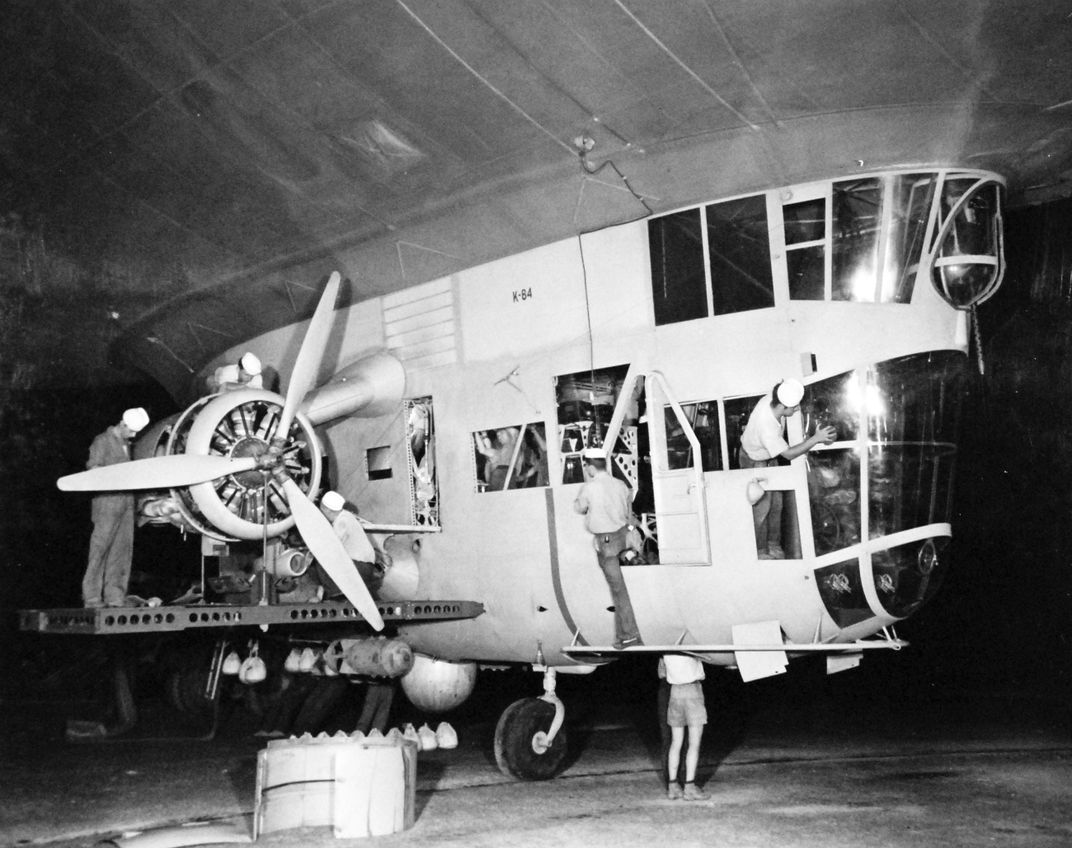
Protecting Convoys and Engaging U-Boats
K-ships were not only designed to find survivors of ships sunk by German U-boats. These blimps were also able to protect convoy shipping by locating submarines and attacking them when possible.
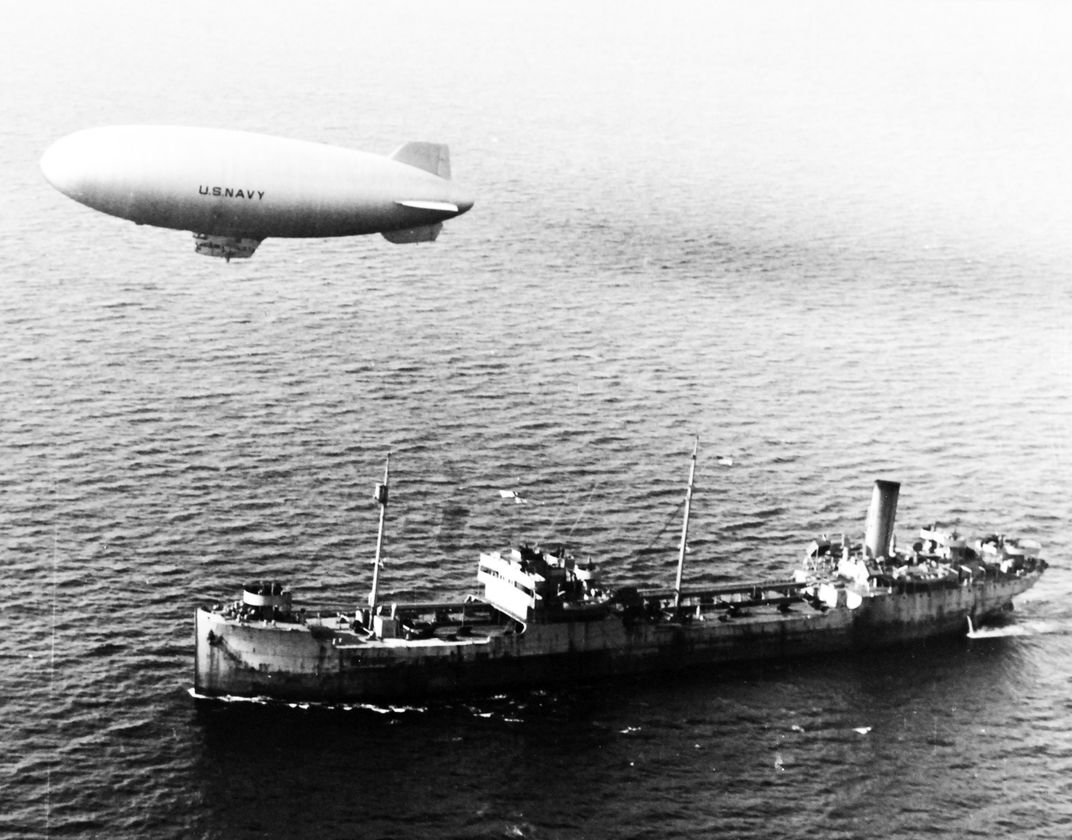
Due to their ability to hover and fly at low altitudes and speeds, K-ships could easily stay with convoys, and the numerous windows located throughout the control car provided excellent visibility, allowing crews to keep a lookout for everything from periscopes to oil slicks on the surface of the water. They could also operate in conditions that grounded other aircraft, such as fog or low cloud cover, allowing them to conduct anti-submarine warfare missions that otherwise would have been impossible. Noted for exceptional endurance, K-ships carried a crew of 10 and could operate for 26 hours at cruising speed, allowing them to constantly patrol the shipping lanes, waiting out U-boats that needed to surface. The combination of these unique characteristics and many more made K-ships a crucial element of anti-submarine warfare.
Combining K-ships with specialized equipment allowed them to find U-boats even if they were located out of sight below the ocean’s surface. Each crew consisted of two radiomen who were responsible for operating long range radio communications, allowing K-ships to alert convoys, surface ships, and attack aircraft to the presence of U-boats. They also operated radar that could detect surfaced submarines at night and in low visibility conditions. One of the most important pieces of equipment, however, was known as Magnetic Anomaly Detectors, or MAD equipment. MAD could detect distortions in Earth’s magnetic field caused by a large metal object, such as a submerged U-boat. It had a range of about 400 feet, making the low flying K-ships ideal operators. But this equipment was not flawless and it could not separate magnetic distortions caused by possible enemy craft from those caused by miscellaneous debris, including sunken wrecks. To fix this problem, K-ships would often use MAD equipment in combination with sonobuoys, which were dropped from the air to produce sonar contacts. Once a submarine was located, K-ships would call in surface ships and land-based aircraft to attack. The combination of these various pieces of equipment allowed K-ships to effectively hunt submarines and protect convoy ships.
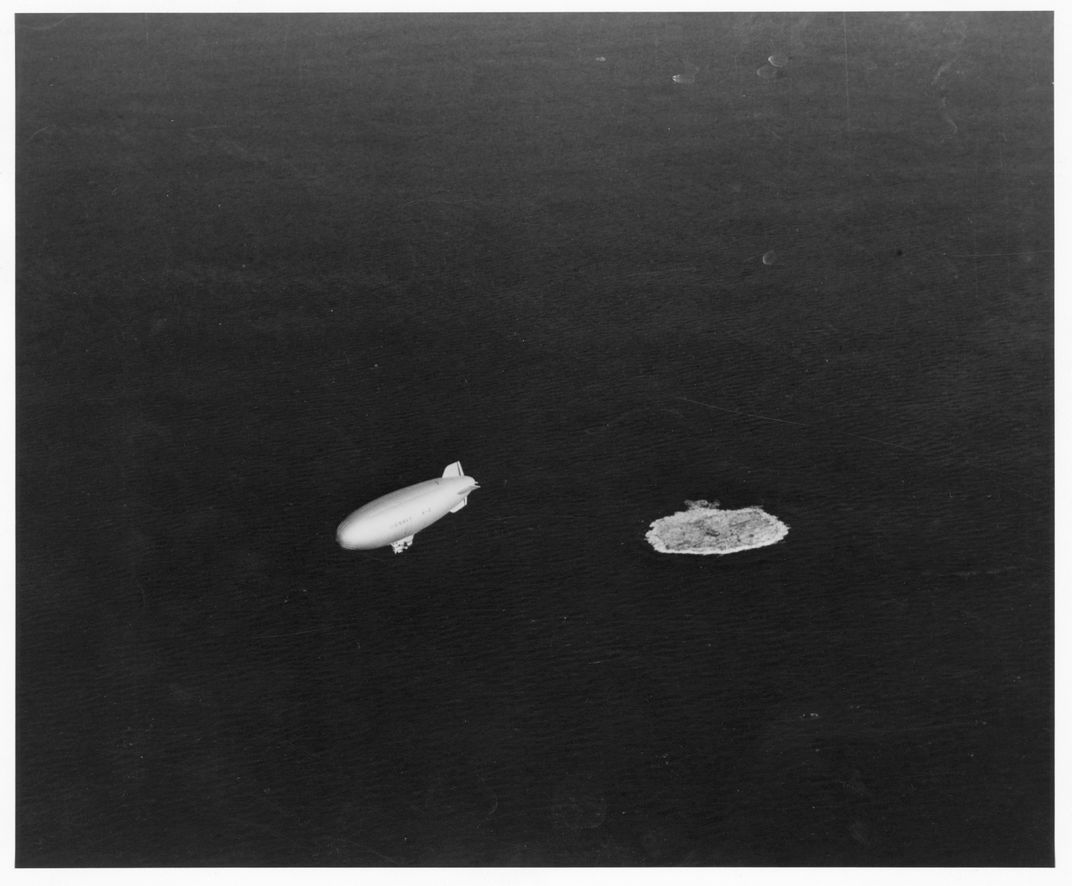
K-ships were also able to launch attacks. They were often loaded with a variety of ordnance, and what they carried changed throughout the war as new weapons systems became available. K-ships could carry up to four weapons, varying from 350-pound Mk 47 depth bombs, Mk 17 depth charges, or Mk 24 mines/acoustic torpedoes. Two of these could be located within an internal bomb bay and two could be located externally on the control car. They were also armed with a 50-caliber machine gun located in a turret located in the front of the control car that had a wide range of movement. If a K-ship located evidence that a submarine was in the area, it could drop its ordnance to damage the submarine, or at least make it surface, until reinforcements arrived. The K-ship’s ability to make these attacks allowed them to defend convoy ships, and several managed to damage submarines or assist in sinking them. It was dangerous work and similar attacks led to the downing of one K-ship by enemy fire.
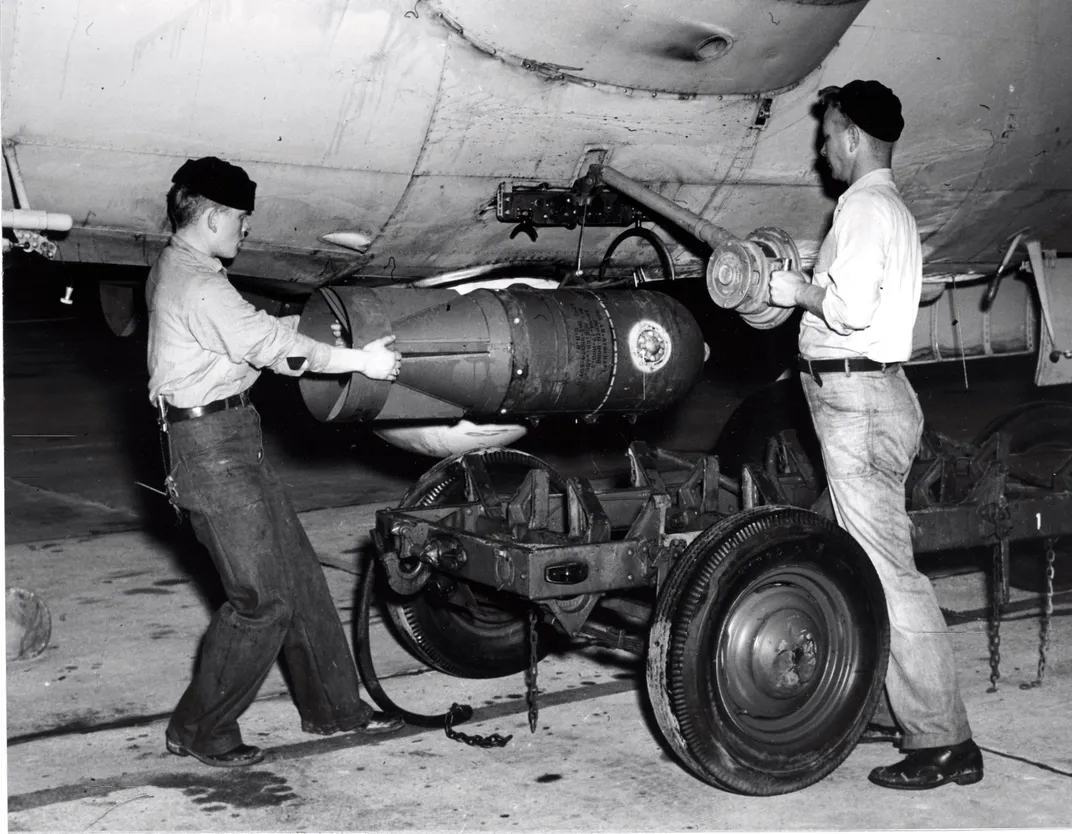
The Loss of K-74
Only one K-ship was destroyed due to enemy contact during World War II. On the night of July 18, 1943, the K-74 was protecting ships through the Florida Straits. The crew picked up a contact on K-74’s radar and began searching the area for a U-boat. They quickly found the U-134 silhouetted against the water by moonlight. Although still 20 miles from the convoy, command pilot Lt. Nelson G. Grills determined that the submarine did pose a threat. They maneuvered the K-74 into a position to make an attack run with the ship’s depth charges before the U-134 opened fire with machine guns and its deck gun. Although it suffered some damage, the K-74 flew over the U-134 only to have its depth charge fail to drop. It managed to fire 100 rounds of .50-caliber machine gun bullets at the submarine, but the machine gun fire the K-74 sustained from the submarine took a significant toll. The K-74’s starboard engine caught fire, though it was quickly extinguished, and holes in the blimp caused it to quickly lose altitude. It plunged into the sea shortly before midnight. The crew bailed out and floated near the wreck for eight hours. In the morning, a Grumman JRF amphibian located the crew and landed to rescue them. Unfortunately, one crewman, Isadore Stessel, was attacked by a shark shortly before the crew was rescued, marking one of the few deaths of a K-ship crewman in combat. The U-134 left the area, only reporting minor damage caused by gunfire from the K-74. It continued its patrol until it was eventually sunk off the coast of Spain in August 1943. Although the K-74 did not sink a U-boat during its last mission, K-ships assisted in some of the final attacks on U-boats of the war.
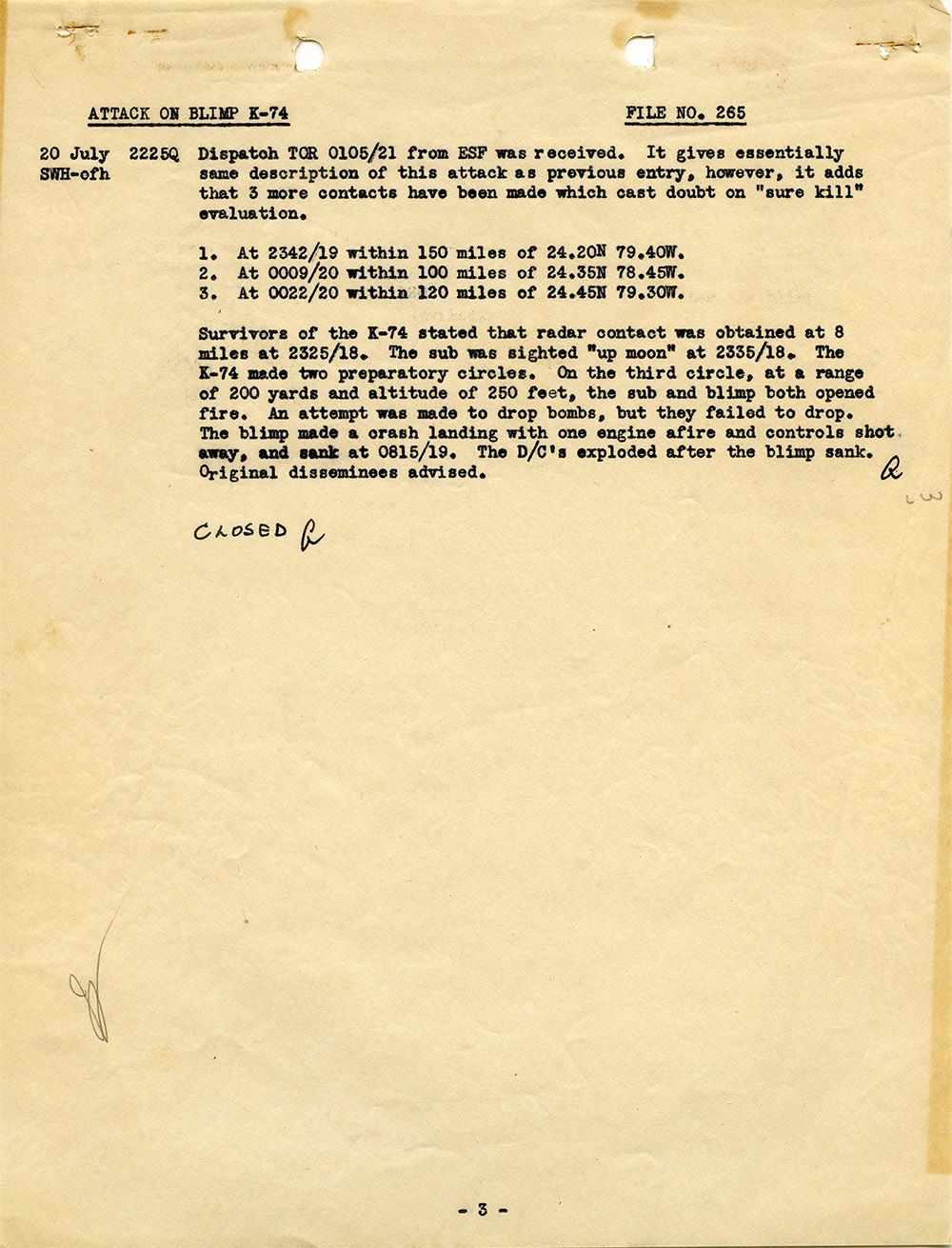
The Destruction of U-853 and Capture of U-858
On May 5, 1945, the U.S. collier Black Point was sunk off the coast of Rhode Island. Several ships, including the destroyer Ericsson, Coast Guard frigate Moberly, and destroyer escorts Atherton and Amick, quickly arrived at the area in order to hunt down the U-boat responsible for the attack. The K-16 and K-58 were dispatched to the area on May 6 to help with the search for the submerged submarine. After arriving on the scene, the K-16 used its MAD equipment and located a target below the water. Following depth charge attacks by the surface ships, the K-16 deployed a sonobuoy, and detected sounds below the surface. It proceeded to drop its depth charges on the submarine’s suspected location. The K-58 then used MAD equipment to mark possible locations and dropped two depth charges of its own. After several more rounds of depth charge attacks from the surface ships, the K-ships noted numerous pieces of debris floating on the surface, marking the last destruction of an enemy U-boat in American waters.
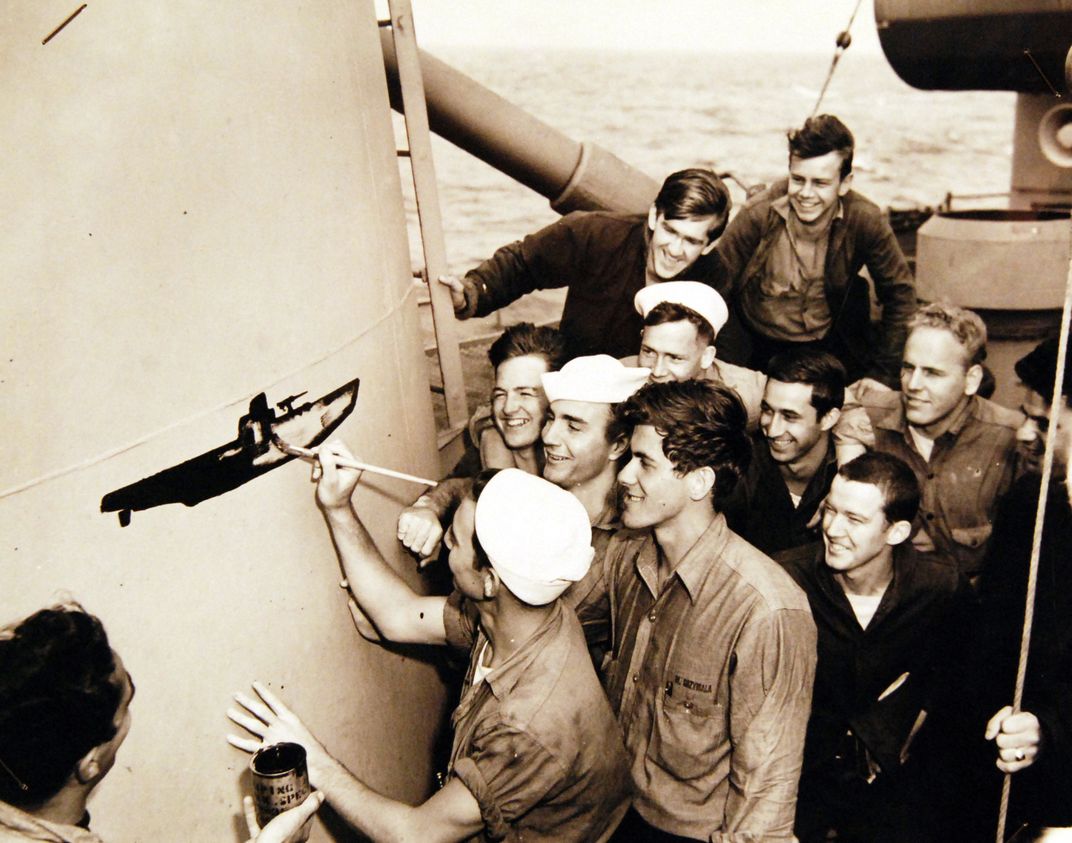
The last World War II contribution of K-ships in the Atlantic occurred shortly after the war ended. On May 14, 1945, the captain of U-858 surrendered to the U.S. Navy. A K-ship helped escort the submarine into port, marking the end of anti-submarine warfare duties for K-ships in the battle of the Atlantic.
K-ships provided critical protection to convoys carrying the vital supplies needed to win World War II. In his work, Blimps and U-Boats, J. Gordon Vaeth explained:
The blimp stayed with the convoy, flying low and throttling back to keep a slow pace. To the men of the freighters and tankers, the protection provided by an airship was a personalized thing. Airship crews and merchant ship crews waved to each other, the airship looking all the while majestic and overwhelmingly powerful and reassuring as it threaded its way through a convoy or kept station abreast and ahead of it. The men in the blimps reciprocated this feeling of camaraderie. The same merchant ships plying the same coastal routes became familiar sights (pg. 69).

The Navy’s lighter-than-air forces, including K-ships, flying over both the Atlantic and Pacific Oceans, completed almost 36,000 flights totaling 412,000 flight hours. The destruction to convoys feared early in the war caused by marauding U-boats diminished dramatically once K-ships started keeping a constant vigil overhead and while searching for the enemy below. By the end of the war, 72 members of the Navy’s lighter-than-air forces paid the ultimate price to safeguard the merchant fleet and protect the lifeline they provided to hundreds of thousands of men, women and children.
If you would like to read more about the role of lighter-than-aircraft in World War II, please read “Blimps and U-boats: U.S. Navy Airships in the Battle of the Atlantic” by J. Gordon Vaeth
Thomas Paone is a Museum Specialist in the Aeronautics Department, and curates the Lighter-than-Air collection.
